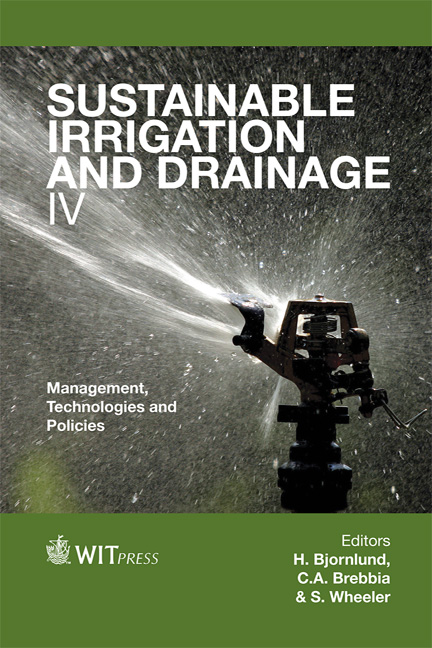Subsurface Drip Irrigation With Reclaimed Water: Issues We Must Think Now
Price
Free (open access)
Transaction
Volume
168
Pages
9
Page Range
203 - 211
Published
2012
Size
375 kb
Paper DOI
10.2495/SI120171
Copyright
WIT Press
Author(s)
M. M. H. Oliver, G. A. Hewa & D. Pezzaniti
Abstract
Subsurface drip irrigation (SDI) is regarded as the most efficient and safe technology in reclaimed water irrigation schemes as it minimizes potential human exposure to low quality water. However, the system performance is often limited due to emitter clogging by complex biophysical activities as the whole assembly is laid underground. Growing evidence suggest that soil temperature is strongly correlated with emitter clogging although the dynamics of how it affects emitter performance is yet to be understood. This study analyses the thermal variation in rhizosphere including the consequent changes in recycled water quality and their implications on bio-fouling of emitters. In the northern horticultural district of Adelaide, seasonal variation of 18°C at 20 cm below the ground is very common and the recorded variation in any 10 year period is notably high (25.8°C). Furthermore, the average diurnal variation is also important for operational purpose as the minimum and maximum soil temperature in any day would always occur in specific times. This variation in subsurface temperature affects reclaimed water quality primarily by regulating microbial growth in the labyrinth flow path of emitters. The ever changing level of microbial quality of recycled water still poses threat to sustainable practice of drip technology. The study concludes that future research, design and operation of reclaimed water irrigation schemes must account for these sustainability issues. Keywords: subsurface drip irrigation, reclaimed water, rhizosphere, emitter clogging, biofilm.
Keywords
subsurface drip irrigation, reclaimed water, rhizosphere, emitter clogging, biofilm.





